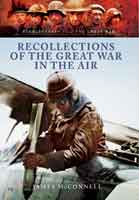Control in the Sky (eBook)
The Evolution & History of the Aircraft Cockpit
By
L F E Coombs
Imprint: Pen & Sword Aviation
File Size: 80.1 MB (.epub)
Pages: 320
ISBN: 9781473813359
Published: 30th March 2005
Imprint: Pen & Sword Aviation
File Size: 80.1 MB (.epub)
Pages: 320
ISBN: 9781473813359
Published: 30th March 2005
Click here for help on how to read our eBooks and terms of download
You'll be £6.99 closer to your next £10.00 credit when you purchase Control in the Sky. What's this?
Need a currency converter? Check XE.com for live rates
| Other formats available - Buy the Hardback and get the eBook for free! | Price |
|---|---|
| Control in the Sky Hardback Add to Basket | £25.00 |
In the first early years of aviation, the control systems and instruments found in a typical aircraft cockpit were few and simple, but did form the basic pattern of requirements still used today. Although pioneering aeroplanes seldom achieved speeds above 100 mph or reached altitudes above 10,000 feet, pilots still required reliable information on speed, altitude, attitude, engine condition and compass direction. Instruments and controls were designed and positioned for mechanical convenience rather than pilot comfort. This situation continued well into the 1930s and then the remarkable increase in aircraft performance created during World War II generated an altogether different working environment for pilots who now had to cope with a multitude of information sources and far more sophisticated control mechanisms. Aircraft designers now considered how best to organise cockpits and flight decks to assist the pilot. This is the history of how ergonomically designed civil and military aircraft cockpits and flight decks evolved. Civil aircraft now regularly fly at transonic speeds at around 35,000 feet, and military jets at twice the speed of sound on the edge of space. These are demanding environments. However, modern cockpit-technologies, with simplified presentation of flight information and finger-tip controls, have eased pilot's tasks.
This meticulously detailed account examines not only specific cockpit and flight deck arrangements but also how basic human skeletal and cognitive factors influence the design of the pilot's “office”.
Speedreaders.info
More titles by L F E Coombs
Other titles in Pen & Sword Aviation...














